DevQuest
Our challenge was to build a web solution for low income workers with the goal to help get a tech education, learn skills and attain a better paying job.
How to make our web solution for tech training be educational, socially engaging, and entertaining?
From our prompt, we made assumptions of why low income workers would, and why they would not seek out tech education. This was the frame for interview questions that we asked are target market that were low income workers ages 18-28.
We analyzed the responses of 8 interviewees, and from this we were able to create a persona and come up with the solution that In order for the product to be successful it had to be financially rewarding, socially engaging, educational, and entertaining.
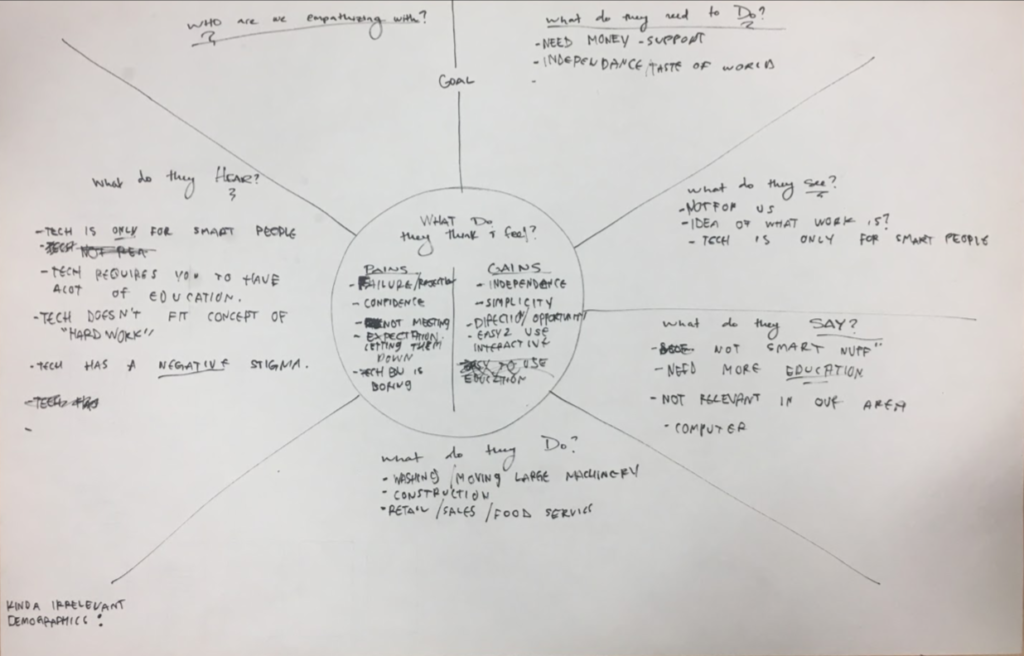
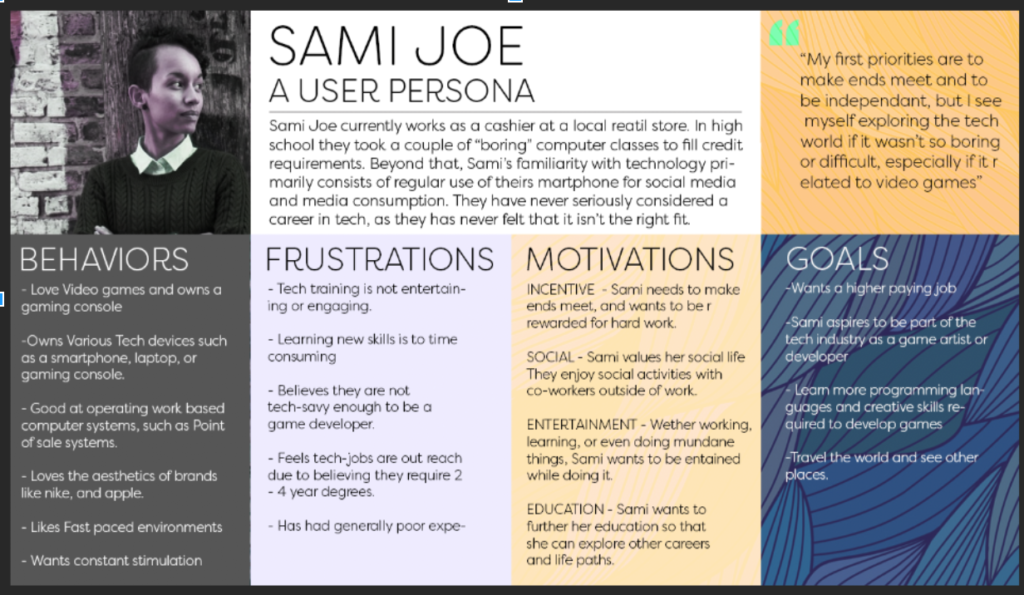
We also found that game design is an interest for the majority of who we interviewed and we were able to pinpoint what kind of product we should create; a website for the education in the tech industry of game design and game development.
For the website to overcome the challenges of being engaging and entertaining, we decided to have the education and the learning of game design and development go through the experience of gamification.
We analyzed the responses of 8 interviewees, and from this we were able to create a persona and come up with the solution that In order for the product to be successful it had to be financially rewarding, socially engaging, educational, and entertaining.
To go along with gamification, I wanted to add to the user experience by having a “Choose Your Faction” when you begin the tech education. The inspiration came from different video games that also have a similar styles. This concept would be a unique user experience for our game design gamification.
In the user testing we did see that the term “faction” was not as commonly known, so we made a change to “Choose Your Path”
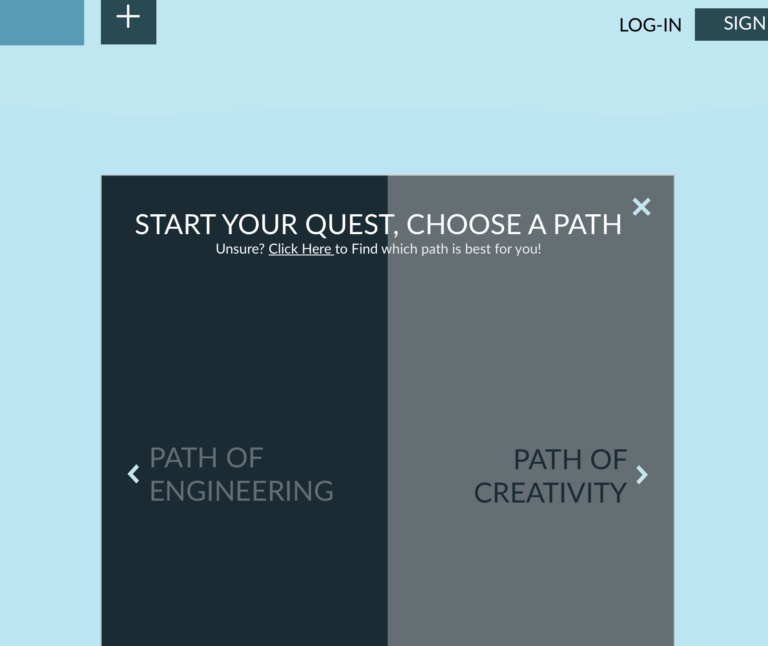
For the layout of the website, the homepage, dashboard, the lesson modules, and all the quizzes would look. Everyone in the group came up with some wireframe sketches and we voted on the one that we liked. We picked the designs that were familiar looking to ones that we personally had seen in our own education and built on that.
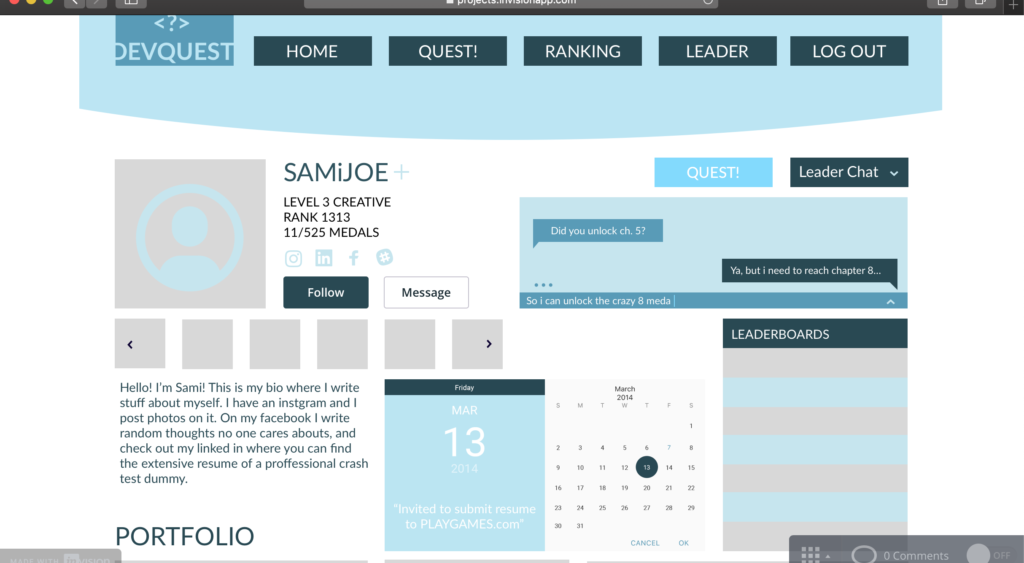
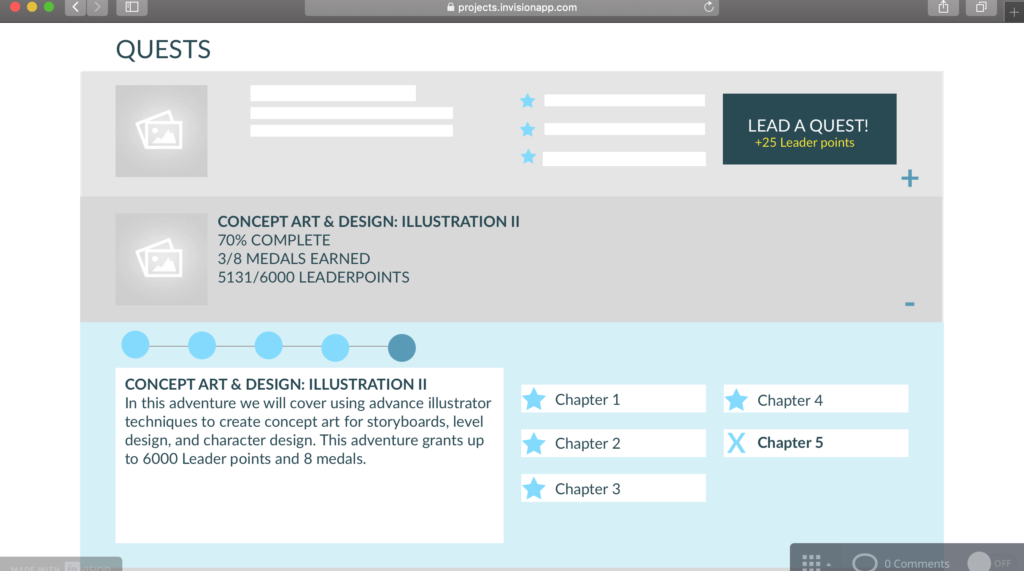
A strong social network was important for the design of the webpage, the functionality of the education, the future of the user. As a student goes through the education process, we wanted the ability to earn points through their work, the completion of the modules and through the mentor program. When the students complete milestones or earn their way up a leader board, different networking events and opportunities to help their career become available.
An example of how this works is, if a student gets to a certain level (completes a specific amount of modules and lessons) and has a place on the leader boards, it shows that he is at a point in his education where he is ready to make careers moves.
Too add to the gamification experience, we also wanted the ability to use the points you earn to be able to customize an avatar and make him look cool with different skins or uniforms or things that are popular in video games.
Now if everyone got perfect scores on all the test and completed all the modules, they would hit a certain plateau and not be able to move further. This problem is solved with the peer mentor program.
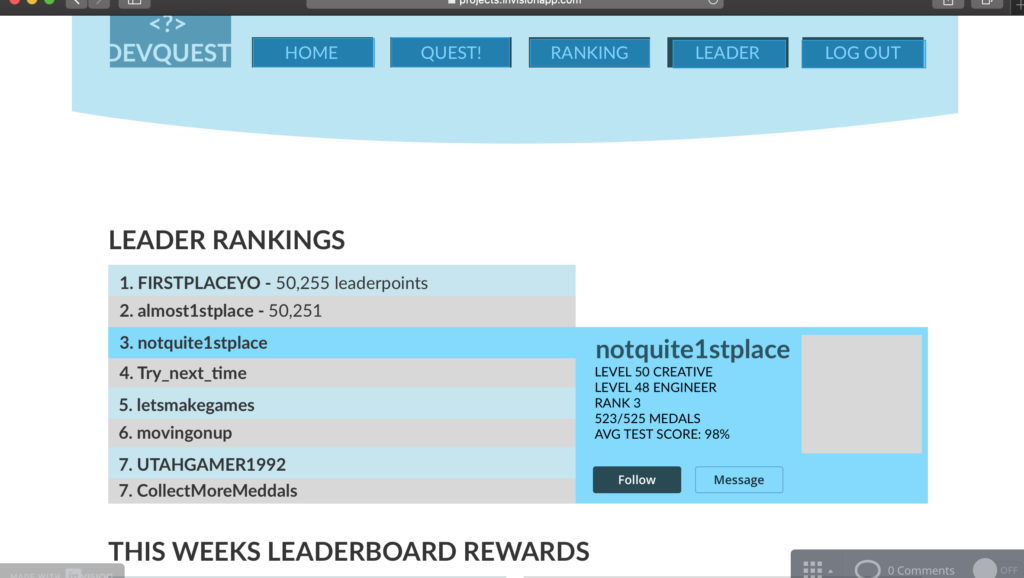
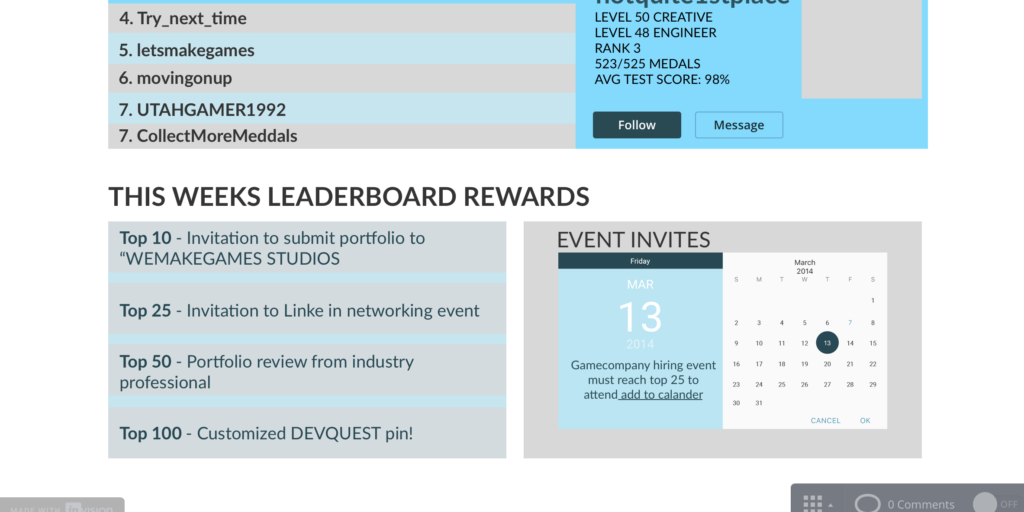
Having a strong network and mentors when you complete Devquest cannot be stressed enough. This directly correlates to a financially rewarding job in the industry.
My main contribution to the project is the Peer Mentor Program. My thinking is that if we were able to create a system that builds up the students from within the program, it would make the program strong, it would better the knowledge of the students of networking, and create amazing opportunities in the real world once they are done with their education.
Basic idea is for students who are new in the program can get help and mentorship from students/ peers that are further along and have done the sections/modules.
Students that become mentors and participate in the program receive extra points for moving up in the leader boards as incentive. Also being a mentor would look good on resumes
Benefits of the program
- Building a strong social network with in the student body
- Students get help in areas that they struggle or have questions in
- When Mentor students help and teach students, they reinforce their own knowledge of the subjects.
How this program transitions in to the work world
- Mentor students, by the end of their own schooling, have experience helping others understand concepts in their field of work
- Mentor students now have personal experience working with individuals. If the company they work for are looking for new talent, they now have knowledge of who they can look at, plus they have personal experience with those that they mentored and networked with. Making transitions into the work place much smoother.
- For the student, after working with the mentor programs, you now have networked with someone in your field of study and future career. Later on if that mentor goes on to work for a good company, the student now knows someone in that working world.
As students participate in the mentor program, and then mentor those as the progress, we build up the students from within. And it is how we can get quality job candidates ready for the work environment. A strong functional network can make the transition from school to work seem less.
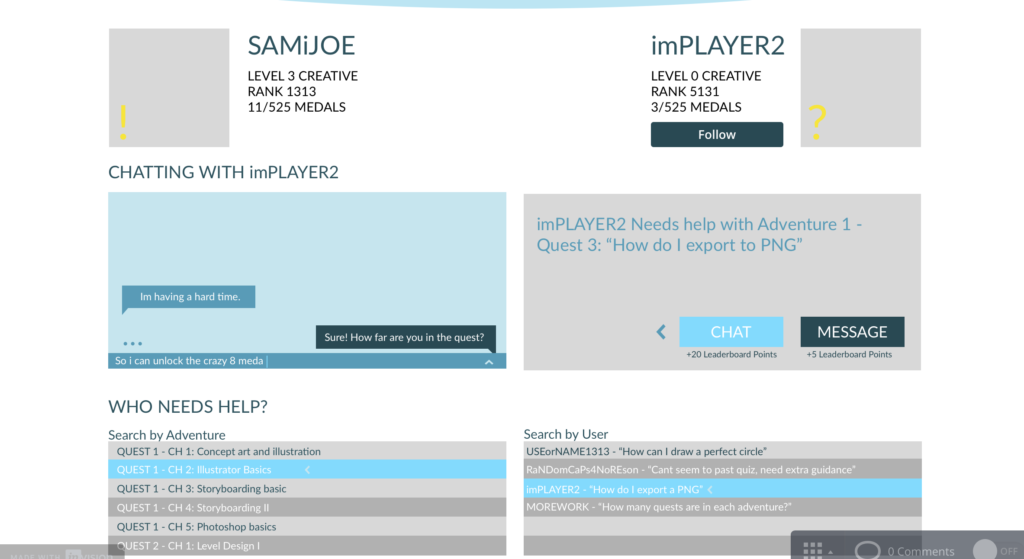

By the end of the time allowed for the project we were able to give a few deliverables, give a strong foundation for the solution to the challenge of tech training for low income workers, and an good high level fidelity and prototype of the basic functions of the project’s website.
The website solution answered the questions of how to make our web solution for tech training be educational, socially engaging, and entertaining. Having an educational experience go through gamification keeps the students entertained while they learn, Having a strong peer mentor program helps students retain the knowledge learned and network with those around.
This was the first stab at the UX design process, and the tricky balance you need to exhibit on each of steps. It took some adjustment on how much time and energy should we focus as a group on each of the designing thinking processes. What I personally took from this project is learning the timing to push on to the next stage or to focus a little bit more on a certain aspect is just as important knowing the individual design processes and is a skill in itself. Mastering that would take some more experience and projects.